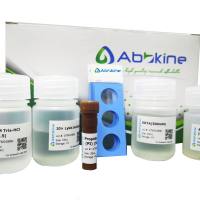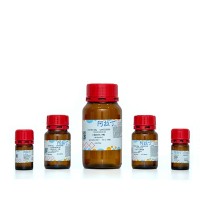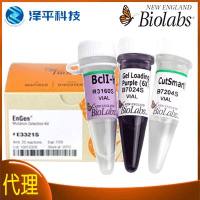Methods to Remove DNA Contamination from RNA Samples
互联网
A frequent cause of concern among investigators performing quantitative RT-PCR is false positives caused by genomic DNA contamination of RNA preparations. Because PCR is such a sensitive technique, a single copy of a gene can, theoretically, be detected. Here we test various methods for removing DNA contamination. Genomic DNA false positive signals are easily identified by performing a "no-RT" control during RT-PCR. We can therefore assess the effectiveness of DNA removal methods by agarose gel analysis of the -RT reactions.
Three Methods of Removing Contamination from RNA
The data presented here results from testing several common methods of DNA removal from RNA samples. Each DNA removal technique was analyzed for effectiveness by PCR amplification of the RNA with and without prior reverse transcription. The methods include:
DNase digestion
DNase is an endonuclease that cleaves DNA by breaking phosphodiester bonds. It must be inactivated or removed from the reaction prior to PCR, otherwise, it may digest newly amplified DNA. For this study, we tested 2 concentrations of DNase I (10 and 50 µl DNase I/ml sample) and four DNase I inactivation/removal methods:
- Chelation with 20 mM EDTA
- Heating at 70°C for 5 minutes
- Proteinase K digestion followed by phenol/chloroform extraction and NH 4 OAc/EtOH precipitation
- Protein removal using Ambion"s RNAqueousÌ Kit
Acid phenol:chloroform extraction
Acid phenol:chloroform (5:1 phenol:CHCl
3
; pH 4.7) extraction partitions DNA into the organic phase. The RNA remains in the aqueous phase and can be subsequently recovered by precipitation.
Lithium chloride (LiCl) precipitation
LiCl precipitation is a selective precipitant of RNA. It inefficiently precipitates DNA which is discarded in the supernatant.
Assessing DNA Contamination of RNA Samples
To confirm the presence of contaminating DNA, two RNA samples were assessed on a 1% denaturing agarose gel by ethidium bromide staining (Figure 1a). One RNA sample showed visible DNA contamination (sample B), while the other did not (sample A). The same samples were then subjected to RT-PCR, along with a "no-RT" control, for the presence of ribosomal protein S15 message. Regardless of whether contaminating DNA was visible by gel assessment, both RNA samples showed amplifiable DNA in the no-RT control (Figure 1b). Once DNA contamination was verified, both RNA samples were subjected to the three DNA removal methods described above.
Results
DNase digestion
Both RNA samples A & B were treated with 10 and 50 U DNase I (Ambion, Inc.) per ml RNA sample at 37°C for 30 minutes. The digested samples were split into four tubes and each was treated with a different DNase inactivation or removal method. The data reveal that DNase treatment followed by any of the inactivation methods was sufficient to remove contaminating DNA as tested by the no-RT control (Figure 2a) and did not inhibit subsequent RT-PCR (Figure 2b).









